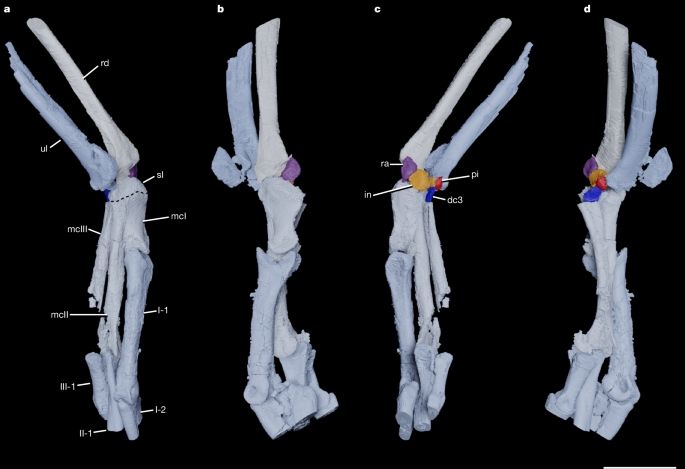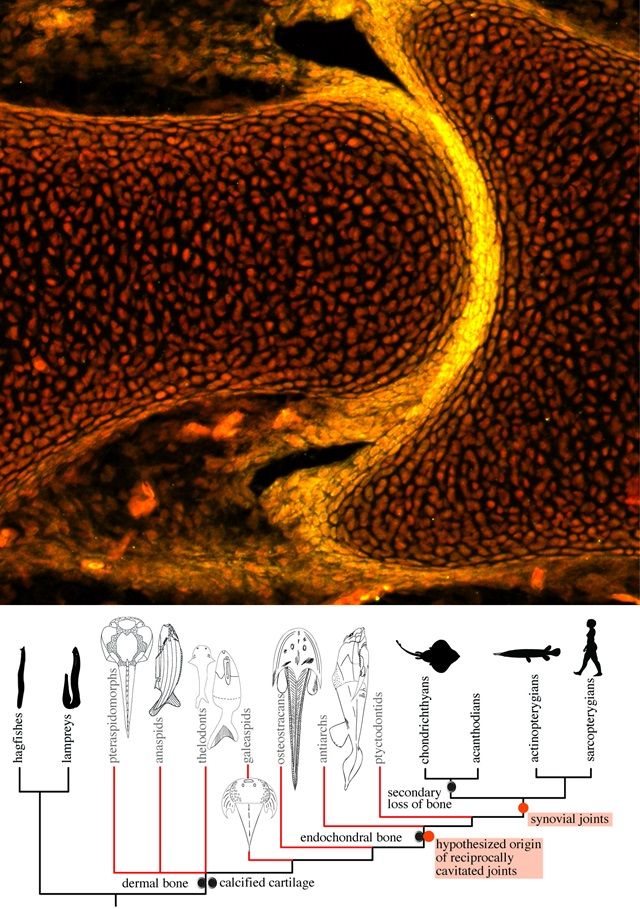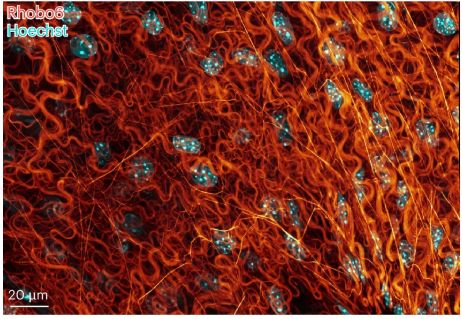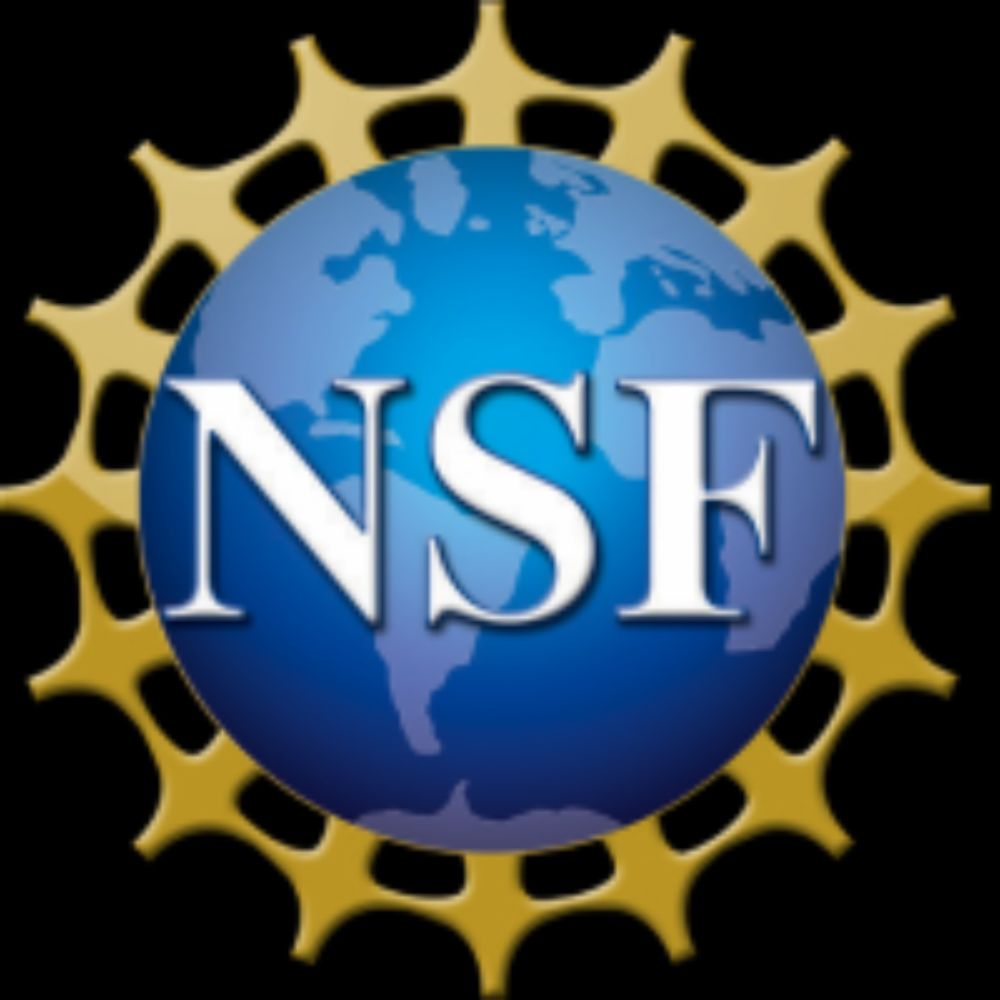Matteo Fabbri
@mfabbri.bsky.social
Assistant Professor
Center for Functional Anatomy and Evolution
Johns Hopkins University School of Medicine
Center for Functional Anatomy and Evolution
Johns Hopkins University School of Medicine
Reposted by Matteo Fabbri
Super excited and thrilled to see this work come out in Nature today. 🥹@tdcapellini.bsky.social Thank you so much for your amazing mentorship throughout the project, and to all my co-authors who helped take this work to the next level.
1) I am delighted to present this terrific tour de force research conducted by my post-doc Dr. Gayani Senevirathne @gayani.bsky.social and published today in Nature -
www.nature.com/articles/s41...
www.nature.com/articles/s41...

The evolution of hominin bipedalism in two steps - Nature
The human pelvis exhibits distinct spatiotemporal ossification patterns and an ilium cartilage growth plate that is shifted perpendicularly compared with those of other mammals and non-human primates—...
www.nature.com
August 27, 2025 at 4:08 PM
Super excited and thrilled to see this work come out in Nature today. 🥹@tdcapellini.bsky.social Thank you so much for your amazing mentorship throughout the project, and to all my co-authors who helped take this work to the next level.
Reposted by Matteo Fabbri
1) I am delighted to present this terrific tour de force research conducted by my post-doc Dr. Gayani Senevirathne @gayani.bsky.social and published today in Nature -
www.nature.com/articles/s41...
www.nature.com/articles/s41...

The evolution of hominin bipedalism in two steps - Nature
The human pelvis exhibits distinct spatiotemporal ossification patterns and an ilium cartilage growth plate that is shifted perpendicularly compared with those of other mammals and non-human primates—...
www.nature.com
August 27, 2025 at 3:13 PM
1) I am delighted to present this terrific tour de force research conducted by my post-doc Dr. Gayani Senevirathne @gayani.bsky.social and published today in Nature -
www.nature.com/articles/s41...
www.nature.com/articles/s41...
New paper today about the evolution of the wrist along the dinosaur to bird transition: a bird-like configuration appeared in predatory dinosaurs first, as suggested by new exceptionally preserved hands of oviraptors and troodontids
www.nature.com/articles/s41...
www.nature.com/articles/s41...

Reorganization of the theropod wrist preceded the origin of avian flight - Nature
The forelimbs of two Late Cretaceous theropod dinosaurs show the presence of the pisiform bone, previously thought to have been lost early in theropod evolution and regained in birds during the evolut...
www.nature.com
July 9, 2025 at 3:14 PM
New paper today about the evolution of the wrist along the dinosaur to bird transition: a bird-like configuration appeared in predatory dinosaurs first, as suggested by new exceptionally preserved hands of oviraptors and troodontids
www.nature.com/articles/s41...
www.nature.com/articles/s41...
Reposted by Matteo Fabbri
Thrilled to have co-written a News & Views with P. Janvier on Haridy et al.’s recent Nature paper. They reveal that Anatolepis, once thought to have the oldest dental tissue, is actually Cambrian arthropod sensory armor!
Paper: nature.com/articles/s41...
N&V: www.nature.com/articles/d41...
Paper: nature.com/articles/s41...
N&V: www.nature.com/articles/d41...

The evolutionary origin of sensitive dental structures
Fossil data shed light on a debate about when vertebrate dental tissues arose by assigning an early sensory structure to arthropods rather than to vertebrates.
www.nature.com
May 22, 2025 at 6:23 AM
Thrilled to have co-written a News & Views with P. Janvier on Haridy et al.’s recent Nature paper. They reveal that Anatolepis, once thought to have the oldest dental tissue, is actually Cambrian arthropod sensory armor!
Paper: nature.com/articles/s41...
N&V: www.nature.com/articles/d41...
Paper: nature.com/articles/s41...
N&V: www.nature.com/articles/d41...
Glad to share a new paper led by @yara_haridy and @NeilShubin Lab on the early evolution of teeth! Modern and fossil data point at an ancestrally sensorial function for the earliest dentine
www.nature.com/articles/s41...
www.nature.com/articles/s41...

The origin of vertebrate teeth and evolution of sensory exoskeletons - Nature
Re-examination of the presumed Cambrian fossil fish Anatolepis reveals previous misidentification of aglaspidid sensory structures as dentine, a vertebrate sensory tissue, showing it to be a...
www.nature.com
May 21, 2025 at 3:14 PM
Glad to share a new paper led by @yara_haridy and @NeilShubin Lab on the early evolution of teeth! Modern and fossil data point at an ancestrally sensorial function for the earliest dentine
www.nature.com/articles/s41...
www.nature.com/articles/s41...
Glad to see the formal description of the Chicago specimen of #Archaeopteryx finally out in @nature.com! Troodontid and early bird features in the palate and evidence of tertiary feathers
www.nature.com/articles/s41...
www.nature.com/articles/s41...

Chicago Archaeopteryx informs on the early evolution of the avian bauplan - Nature
Analysis of the 'Chicago' Archaeopteryx, a nearly complete and uncrushed specimen, reveals details of the skeleton, soft tissues and plumage of this taxon, providing information on the evolution to av...
www.nature.com
May 14, 2025 at 3:06 PM
Glad to see the formal description of the Chicago specimen of #Archaeopteryx finally out in @nature.com! Troodontid and early bird features in the palate and evidence of tertiary feathers
www.nature.com/articles/s41...
www.nature.com/articles/s41...
Reposted by Matteo Fabbri
Super excited to share our @plosbiology.org paper with @neilshubin.bsky.social and Yara Haridy,
“Synovial joints were present in the common ancestor of jawed fish but lacking in jawless fish”
Paper: plos.io/3CTC8La
Primer by @crumplab.bsky.social: plos.io/4kkhXa6
I hope you enjoy reading it!
“Synovial joints were present in the common ancestor of jawed fish but lacking in jawless fish”
Paper: plos.io/3CTC8La
Primer by @crumplab.bsky.social: plos.io/4kkhXa6
I hope you enjoy reading it!

Synovial joints were present in the common ancestor of jawed fish but lacking in jawless fish
Synovial joints are characterized by lubricated articular surfaces separated by a cavity, providing mobility and load-bearing, but when did they evolve? This comparative and developmental study reveal...
plos.io
February 26, 2025 at 8:21 PM
Super excited to share our @plosbiology.org paper with @neilshubin.bsky.social and Yara Haridy,
“Synovial joints were present in the common ancestor of jawed fish but lacking in jawless fish”
Paper: plos.io/3CTC8La
Primer by @crumplab.bsky.social: plos.io/4kkhXa6
I hope you enjoy reading it!
“Synovial joints were present in the common ancestor of jawed fish but lacking in jawless fish”
Paper: plos.io/3CTC8La
Primer by @crumplab.bsky.social: plos.io/4kkhXa6
I hope you enjoy reading it!
Reposted by Matteo Fabbri
When did synovial joints evolve? @neelimasharma.bsky.social @neilshubin.bsky.social &co reveal that stable, mobile & lubricated joints were present in the common ancestor of jawed fishes but lacking in jawless ones 🧪 @plosbiology.org plos.io/3CTC8La

February 25, 2025 at 7:09 PM
When did synovial joints evolve? @neelimasharma.bsky.social @neilshubin.bsky.social &co reveal that stable, mobile & lubricated joints were present in the common ancestor of jawed fishes but lacking in jawless ones 🧪 @plosbiology.org plos.io/3CTC8La
Reposted by Matteo Fabbri
New paper led by @neelimasharma.bsky.social on the lab! The evolutionary origin of highly mobile joints!
When did synovial joints evolve? @neelimasharma.bsky.social @neilshubin.bsky.social &co reveal that stable, mobile & lubricated joints were present in the common ancestor of jawed fishes but lacking in jawless ones 🧪 @plosbiology.org plos.io/3CTC8La

February 25, 2025 at 7:16 PM
New paper led by @neelimasharma.bsky.social on the lab! The evolutionary origin of highly mobile joints!
Reposted by Matteo Fabbri
@philipcball.bsky.social gets a bit spicier in places than I did, "it can be hard to avoid the suspicion that sometimes its (omics data) collection serves to postpone the awkward time when some sense must be made of it all."
And I like it :)
And I like it :)
"Genes are... the easy part" @philipcball.bsky.social argues biologists need to embrace complexity from the start, rather than beginning with oversimplified "one gene, one trait" models
+1
www.cell.com/cell-systems...
+1
www.cell.com/cell-systems...

Should biology put complexity first?
The dictum “Everything should be made as simple as possible, but no simpler” poses
a problem for biology. How simply can it be told without doing damage to its complex
nature? The answer might be foun...
www.cell.com
February 21, 2025 at 3:53 PM
@philipcball.bsky.social gets a bit spicier in places than I did, "it can be hard to avoid the suspicion that sometimes its (omics data) collection serves to postpone the awkward time when some sense must be made of it all."
And I like it :)
And I like it :)
Reposted by Matteo Fabbri
With gratitude to the Keck Foundation, we get to work on a project with Dana Rashid (MSU) and Susan Chapman (Clemson U) that was inspired by Dana's studies of the dino-bird transition.
today.ucsd.edu/story/uc-san...
today.ucsd.edu/story/uc-san...

UC San Diego Biologist and Collaborators Receive $1 Million Keck Award
A multi-institutional research team that includes UC San Diego biologist Kim Cooper has been awarded a $1 million grant from the W.M. Keck Foundation to study the role of inflammation in animals, whic...
today.ucsd.edu
February 13, 2025 at 3:49 PM
With gratitude to the Keck Foundation, we get to work on a project with Dana Rashid (MSU) and Susan Chapman (Clemson U) that was inspired by Dana's studies of the dino-bird transition.
today.ucsd.edu/story/uc-san...
today.ucsd.edu/story/uc-san...
Reposted by Matteo Fabbri
Ever wondered how your #genes know when to turn on or off? 🧬🔌 In our latest #BioBasics episode, @juliannahaug.bsky.social, a researcher in the Sauka-Spengler Lab, explains gene regulatory networks — the circuits that control gene activity.
Watch + learn more: bit.ly/4jYJmxR
Watch + learn more: bit.ly/4jYJmxR

#BioBasics: What are Gene Regulatory Networks?
The Sauka-Spengler Lab explores the blueprint and circuitry driving cells
bit.ly
February 12, 2025 at 10:30 PM
Ever wondered how your #genes know when to turn on or off? 🧬🔌 In our latest #BioBasics episode, @juliannahaug.bsky.social, a researcher in the Sauka-Spengler Lab, explains gene regulatory networks — the circuits that control gene activity.
Watch + learn more: bit.ly/4jYJmxR
Watch + learn more: bit.ly/4jYJmxR
Reposted by Matteo Fabbri
Gene editing technology began by people studying salt marshes. Ozempic began by folks studying the venom of Gila Monsters. Support for basic science has empowered us to understand our world. Tethering it to applications health has transformed and saved countless lives.
February 8, 2025 at 1:45 PM
Gene editing technology began by people studying salt marshes. Ozempic began by folks studying the venom of Gila Monsters. Support for basic science has empowered us to understand our world. Tethering it to applications health has transformed and saved countless lives.
Reposted by Matteo Fabbri
"Imagine a DAPI-like stain, but for the extracellular matrix." That's basically how this work was pitched to me by Kayvon and Antonio a year or so ago. Now the final product really delivers. Read about their versatile label for ECM in living tissues here: www.nature.com/articles/s41...

February 6, 2025 at 4:02 PM
"Imagine a DAPI-like stain, but for the extracellular matrix." That's basically how this work was pitched to me by Kayvon and Antonio a year or so ago. Now the final product really delivers. Read about their versatile label for ECM in living tissues here: www.nature.com/articles/s41...
Reposted by Matteo Fabbri
CellOracle
In silico transcription factor KO via cell type-specific Gene-Regulatory Network modeling
#Nature 2023
www.nature.com/articles/s41...
In silico transcription factor KO via cell type-specific Gene-Regulatory Network modeling
#Nature 2023
www.nature.com/articles/s41...

February 2, 2025 at 1:53 PM
CellOracle
In silico transcription factor KO via cell type-specific Gene-Regulatory Network modeling
#Nature 2023
www.nature.com/articles/s41...
In silico transcription factor KO via cell type-specific Gene-Regulatory Network modeling
#Nature 2023
www.nature.com/articles/s41...
Reposted by Matteo Fabbri
royalsocietypublishing.org/doi/10.1098/...
This looks right up my street, can't wait to read!
This looks right up my street, can't wait to read!

Quantifying the configurational complexity of biological systems in multivariate ‘complexity space’ | Journal of The Royal Society Interface
An increasing number of evolutionary studies seek to quantify the morphological complexity
of organisms, particularly those comprising serially homologous elements at different
hierarchical levels of ...
royalsocietypublishing.org
January 29, 2025 at 11:51 AM
royalsocietypublishing.org/doi/10.1098/...
This looks right up my street, can't wait to read!
This looks right up my street, can't wait to read!
Reposted by Matteo Fabbri
NSF has created an Executive Order Implementation webpage to ensure the widest dissemination of information and updates. We will continue to communicate with you as we receive additional guidance.
new.nsf.gov/executive-or...
new.nsf.gov/executive-or...

NSF Implementation of Recent Executive Orders
Information for the NSF community regarding executive orders.
new.nsf.gov
January 28, 2025 at 9:42 PM
NSF has created an Executive Order Implementation webpage to ensure the widest dissemination of information and updates. We will continue to communicate with you as we receive additional guidance.
new.nsf.gov/executive-or...
new.nsf.gov/executive-or...
Reposted by Matteo Fabbri
We are excited to share our work on molar #evodevo 🦷 in mouse and hamster 🐁, led by the amazing team of Marie Sémon and Sophie Pantalacci. We find an inverted hourglass pattern, with a maximum of evolutionary divergence at the bell stage.
https://www.biorxiv.org/content/10.1101/2025.01.23.634446v1
https://www.biorxiv.org/content/10.1101/2025.01.23.634446v1

January 27, 2025 at 10:13 AM
We are excited to share our work on molar #evodevo 🦷 in mouse and hamster 🐁, led by the amazing team of Marie Sémon and Sophie Pantalacci. We find an inverted hourglass pattern, with a maximum of evolutionary divergence at the bell stage.
https://www.biorxiv.org/content/10.1101/2025.01.23.634446v1
https://www.biorxiv.org/content/10.1101/2025.01.23.634446v1
Reposted by Matteo Fabbri
Latest from the lab!
I've been seeking the ultimate modulator that regulates the tempo of multiple developmental processes simultaneously, and metabolism has been an attractive candidate for such a global tempo modulator.
However, I was wrong. 1/
www.nature.com/articles/s41...
I've been seeking the ultimate modulator that regulates the tempo of multiple developmental processes simultaneously, and metabolism has been an attractive candidate for such a global tempo modulator.
However, I was wrong. 1/
www.nature.com/articles/s41...

Metabolic activities are selective modulators for individual segmentation clock processes - Nature Communications
Metabolism has been considered an attractive candidate as a global modulator of the tempo of multiple developmental processes, including somite segmentation timing. Here they demonstrate that metaboli...
www.nature.com
January 24, 2025 at 6:37 PM
Latest from the lab!
I've been seeking the ultimate modulator that regulates the tempo of multiple developmental processes simultaneously, and metabolism has been an attractive candidate for such a global tempo modulator.
However, I was wrong. 1/
www.nature.com/articles/s41...
I've been seeking the ultimate modulator that regulates the tempo of multiple developmental processes simultaneously, and metabolism has been an attractive candidate for such a global tempo modulator.
However, I was wrong. 1/
www.nature.com/articles/s41...
Reposted by Matteo Fabbri
Happy #FluorescenceFriday to those who celebrate! Here's a beautiful quail neural tube and somites labelled for microtubules 🟠 and actin 🔵. Imaged by Power-RA Siew Zhuan Tan. #devbio 🧪🔬👩🔬

January 24, 2025 at 12:52 AM
Happy #FluorescenceFriday to those who celebrate! Here's a beautiful quail neural tube and somites labelled for microtubules 🟠 and actin 🔵. Imaged by Power-RA Siew Zhuan Tan. #devbio 🧪🔬👩🔬
Reposted by Matteo Fabbri
Postdoc in @planaria1.bsky.social Lab, @rileynoceros.bsky.social, joins the 2024 class of @hhmi.bsky.social #HannaGrayFellows! Her work on how some vertebrates “pause” their development could transform our understanding of #evolution & human #medicine – listen as she explains: bit.ly/4g8xWED

Stowers Institute Postdoc selected as HHMI Hanna H. Gray Fellow
YouTube video by Stowers Institute for Medical Research
www.youtube.com
January 22, 2025 at 7:56 PM
Postdoc in @planaria1.bsky.social Lab, @rileynoceros.bsky.social, joins the 2024 class of @hhmi.bsky.social #HannaGrayFellows! Her work on how some vertebrates “pause” their development could transform our understanding of #evolution & human #medicine – listen as she explains: bit.ly/4g8xWED
Reposted by Matteo Fabbri
I am very proud of the work that went into this new Sanger Lab publication. This paper was led by postdoc Marta Marchini and a number of my lab's undergraduate students, each of which contributed unique skills or effort to the completion of this project.

January 18, 2025 at 6:03 PM
I am very proud of the work that went into this new Sanger Lab publication. This paper was led by postdoc Marta Marchini and a number of my lab's undergraduate students, each of which contributed unique skills or effort to the completion of this project.
Reposted by Matteo Fabbri
Pretty neat story here by Marta Marchini, @thomsanger.bsky.social and coauthors. Our first look at the role of FGF and HH signaling in the lizard face (Anolis), with big implications for the ancestral amniote condition
1/n
www.nature.com/articles/s42...
1/n
www.nature.com/articles/s42...

Sonic hedgehog and fibroblast growth factor 8 regulate the evolution of amniote facial proportions - Communications Biology
The function of two genes, Sonic hedgehog and Fibroblast growth factor 8, have changed greatly during amniote facial evolution. The expression of these genes can explain variation in the proportion of...
www.nature.com
January 18, 2025 at 4:32 PM
Pretty neat story here by Marta Marchini, @thomsanger.bsky.social and coauthors. Our first look at the role of FGF and HH signaling in the lizard face (Anolis), with big implications for the ancestral amniote condition
1/n
www.nature.com/articles/s42...
1/n
www.nature.com/articles/s42...
Reposted by Matteo Fabbri
Dear #neuralcrest afficionados Please Apply for the Neural Crest and Cranial Placodes GRC - the current application numbers put it at risk for cancellation going forward. Come to beautiful Tuscany and engage with interesting science! www.grc.org/neural-crest...
2025 Neural Crest and Cranial Placodes (GRS) Seminar GRC
The 2025 Gordon Research Seminar on Neural Crest and Cranial Placodes (GRS) will be held in Lucca (Barga), Lucca Italy. Apply today to reserve your spot.
www.grc.org
January 18, 2025 at 12:54 AM
Dear #neuralcrest afficionados Please Apply for the Neural Crest and Cranial Placodes GRC - the current application numbers put it at risk for cancellation going forward. Come to beautiful Tuscany and engage with interesting science! www.grc.org/neural-crest...
Reposted by Matteo Fabbri
Great to see old pals and new results at #SICB2025, including Yara Haridy's deep dive into some of the earliest bony skeletons: www.science.org/content/arti...

Ancient fish fossil suggests ‘living skeletons’ evolved 460 million years ago
X-ray analysis of bony scale shows vertebrates developed ability to remodel and repair bone much earlier than thought
www.science.org
January 13, 2025 at 1:08 AM
Great to see old pals and new results at #SICB2025, including Yara Haridy's deep dive into some of the earliest bony skeletons: www.science.org/content/arti...

